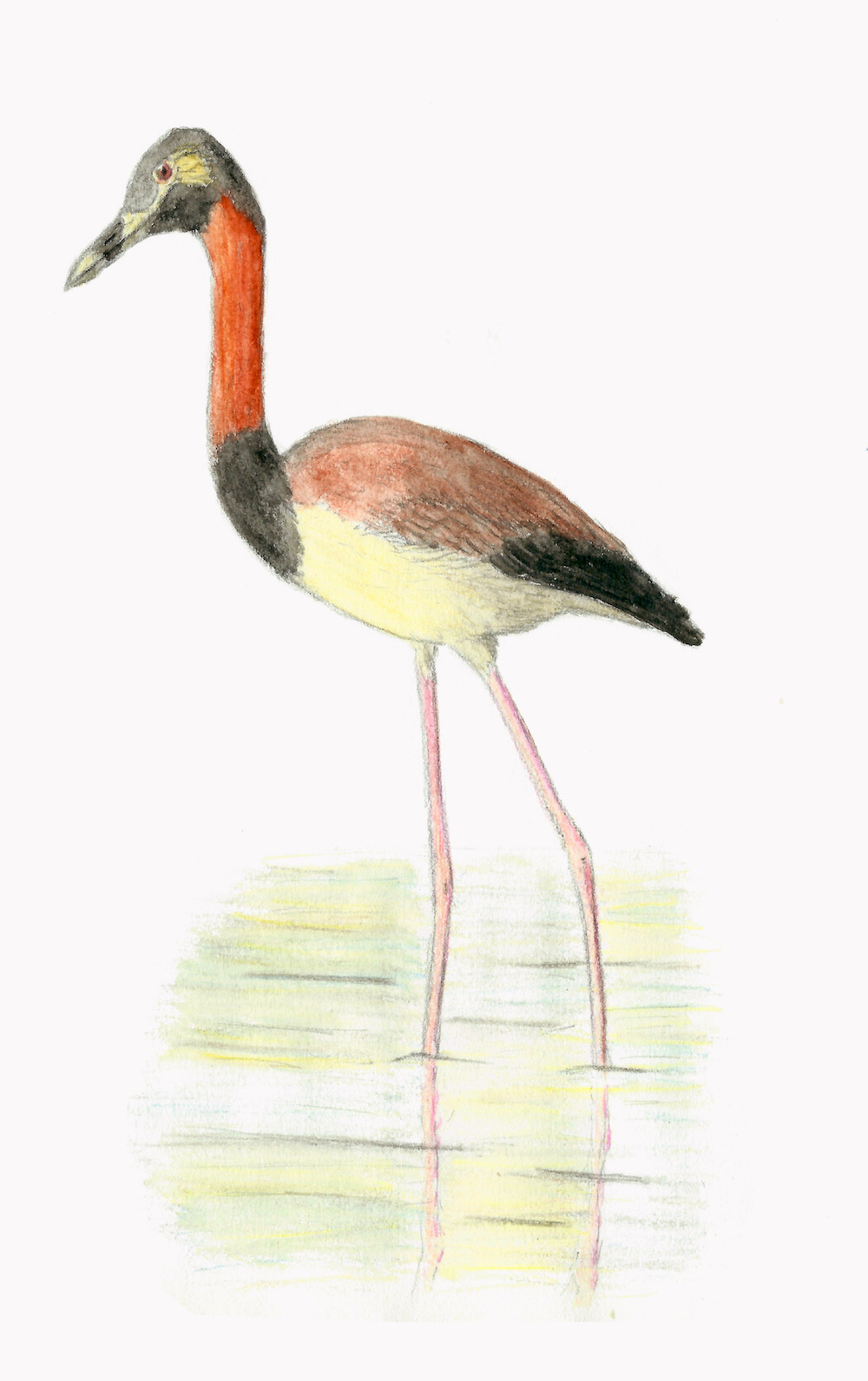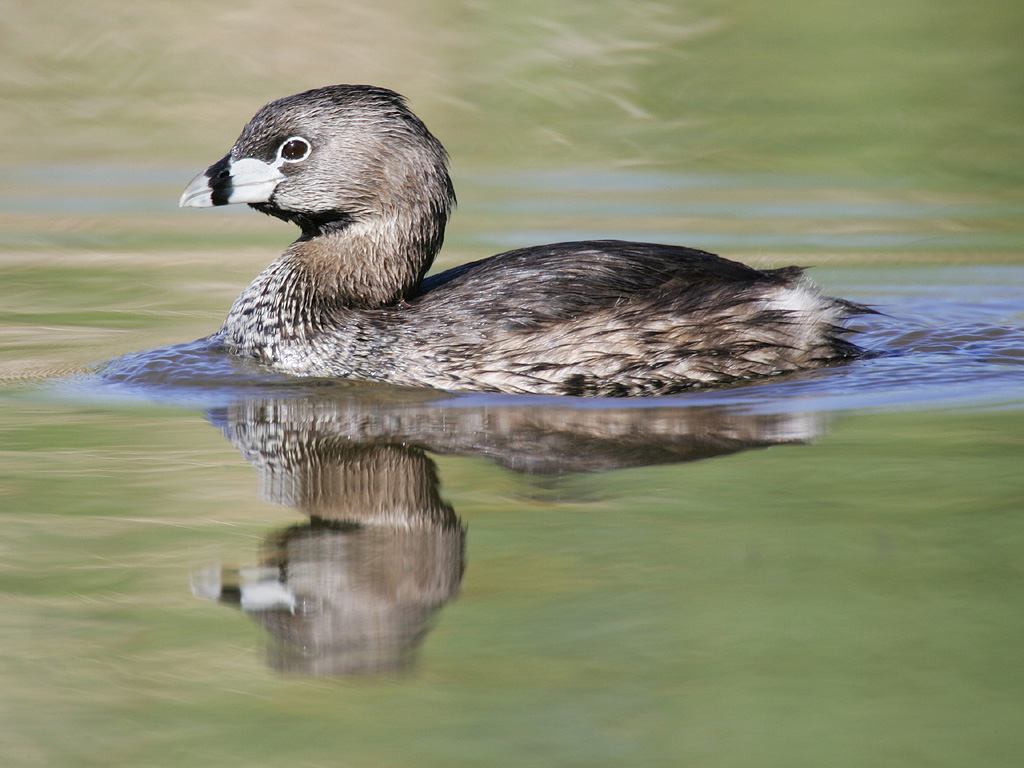|
Mirandornithes
Mirandornithes () is a clade that consists of flamingos and grebes. Many scholars use the term Phoenicopterimorphae for the superorder containing flamingoes and grebes. Determining the relationships of both groups has been problematic. Flamingos had been placed with numerous branches within Neognathae, such as ducks and storks. The grebes had been placed with the loons. However more recent genomic studies have confirmed these two branches as sister groups. Both primitive phoenicopteriformes and their closest relatives, the grebes, were highly aquatic.Mayr, G. (2014) The Eocene ''Juncitarsus'' – its phylogenetic position and significance for the evolution and higher-level affinities of flamingos and grebes. ''Comptes Rendus Palevol''. 13(1):9-18. https://doi.org/10.1016/j.crpv.2013.07.005 This indicates that the entire mirandornithe group evolved from aquatic, probably swimming ancestors. Etymology The term was coined by Sangster in 2005, in order to properly describe the n ... [...More Info...] [...Related Items...] OR: [Wikipedia] [Google] [Baidu] |
Juncitarsus
''Juncitarsus'' is an extinct genus of wading birds from the Eocene of the United States and Germany. Though previously considered a flamingo, it is likely outside of Phoenicopteridae, possibly a basal member of the Mirandornithes (neither Phoenicopteriformes or Podicipediformes). History A small set of bones were collected in 1946 and 1947 by Charles Lewis Gazin, Franklin L. Pearce, and George F. Sternberg at a locality in the Bridger Formation of Wyoming. These bones were sent to be studied by Alexander Wetmore, though he could not identify the species. It was not until 1980 that they were named by Storrs L. Olson and Alan Feduccia. The nominate species was named ''J. gracillimus'' with the nomenclature meaning "slender reed ankle". A second species, ''J. merkeli'' from Germany was named in 1987 by Stefan Peters. Description The remains of ''J. gracillimus'' belong to at least three adult or nearly adult birds and one chick, which at the time of death could not fly. Different ... [...More Info...] [...Related Items...] OR: [Wikipedia] [Google] [Baidu] |
Phoenicopteriformes
Phoenicopteriformes is a group of water birds which comprises flamingos and their extinct relatives. Flamingos (Phoenicopteriformes) and the closely related grebes ( Podicipedidae) are contained in the parent clade Mirandornithes. Fossil record Flamingos and their relatives are well attested in the fossil record, with the first unequivocal member of the Phoenicopteridae, '' Elornis'', known from the late Eocene epoch. Relation to extinct palaelodids The Palaelodidae – an extinct family of peculiar "swimming flamingos" – are believed to be the closest relatives of the modern flamingos, with the extinct genus '' Juncitarsus'' slightly more primitive than the clade which contains flamingos and grebes ( Mirandornithes). The foot and wing anatomy of fossil palaelodids suggests that they were surface-swimming birds, rather than grebe-like divers as was proposed in the past. Whether swimmers or divers, that both primitive phoenicopteriforms and their closest relatives, ... [...More Info...] [...Related Items...] OR: [Wikipedia] [Google] [Baidu] |
Neognathae
Neognathae (; ) is an infraclass of birds, called neognaths, within the class Aves of the clade Archosauria. Neognathae includes the majority of living birds; the exceptions being the tinamous and the flightless ratites, which belong instead to the sister taxon Palaeognathae. There are nearly 10,000 living species of neognaths. The earliest fossils are known from the very end of the Cretaceous with the oldest known members being ''Teviornis'' and ''Vegavis'', but molecular clocks suggest that neognaths originated sometime in the first half of the Late Cretaceous, about 90 million years ago. Since then, they have undergone adaptive radiation, producing the diversity of form, function, and behavior that exists today. Neognathae includes the order (biology), order Passeriformes (perching birds), one of the largest orders of land vertebrates, containing some 60% of living birds. Passeriformes is twice as species-rich as Rodentia and about five times as species-rich as bat, Chiroptera ... [...More Info...] [...Related Items...] OR: [Wikipedia] [Google] [Baidu] |
Flamingos
Flamingos or flamingoes () are a type of wading bird in the family Phoenicopteridae, which is the only extant family in the order Phoenicopteriformes. There are four flamingo species distributed throughout the Americas (including the Caribbean), and two species native to Afro-Eurasia. A group of flamingoes is called a "flamboyance", or a "stand". Etymology The name ''flamingo'' comes from Portuguese or Spanish ; in turn, the word comes from Provençal – a combination of and a Germanic-like suffix ''-ing''. The word may also have been influenced by the Spanish ethnonym or . The name of the genus, ''Phoenicopterus'', is ; other genera names include '' Phoeniconaias,'' which means , and '' Phoenicoparrus,'' which means . Taxonomy and systematics The family Phoenicopteridae was introduced by the French zoologist Charles Lucien Bonaparte in 1831, with '' Phoenicopterus'' as the type genus. Traditionally, the long-legged Ciconiiformes, probably a paraphyletic asse ... [...More Info...] [...Related Items...] OR: [Wikipedia] [Google] [Baidu] |
Grebe
Grebes () are aquatic diving birds in the order (biology), order Podicipediformes (). Grebes are widely distributed freshwater birds, with some species also found in sea, marine habitats during Bird migration, migration and winter. Most grebes fly, although some flightless species exist, most notably in stable lakes. The order contains a single family (biology), family, the Podicipedidae, which includes 22 species in six extant genus, genera. Although, superficially, they resemble other diving birds such as loons and coots, they are most closely related to flamingos, as supported by morphology (biology), morphological, molecular and paleontology, paleontological data. Many species are monogamy in animals, monogamous and are known for their courtship displays, with the pair performing synchronized dances across the water's surface. The birds build floating vegetative nests where they lay several eggs. About a third of the world's grebes are listed at various levels of conservatio ... [...More Info...] [...Related Items...] OR: [Wikipedia] [Google] [Baidu] |
Podicipediformes
Grebes () are aquatic diving birds in the order Podicipediformes (). Grebes are widely distributed freshwater birds, with some species also found in marine habitats during migration and winter. Most grebes fly, although some flightless species exist, most notably in stable lakes. The order contains a single family, the Podicipedidae, which includes 22 species in six extant genera. Although, superficially, they resemble other diving birds such as loons and coots, they are most closely related to flamingos, as supported by morphological, molecular and paleontological data. Many species are monogamous and are known for their courtship displays, with the pair performing synchronized dances across the water's surface. The birds build floating vegetative nests where they lay several eggs. About a third of the world's grebes are listed at various levels of conservation concerns—the biggest threats including habitat loss, the introduction of invasive predatory fish and human p ... [...More Info...] [...Related Items...] OR: [Wikipedia] [Google] [Baidu] |
Grebes
Grebes () are aquatic diving birds in the order Podicipediformes (). Grebes are widely distributed freshwater birds, with some species also found in marine habitats during migration and winter. Most grebes fly, although some flightless species exist, most notably in stable lakes. The order contains a single family, the Podicipedidae, which includes 22 species in six extant genera. Although, superficially, they resemble other diving birds such as loons and coots, they are most closely related to flamingos, as supported by morphological, molecular and paleontological data. Many species are monogamous and are known for their courtship displays, with the pair performing synchronized dances across the water's surface. The birds build floating vegetative nests where they lay several eggs. About a third of the world's grebes are listed at various levels of conservation concerns—the biggest threats including habitat loss, the introduction of invasive predatory fish and human poachin ... [...More Info...] [...Related Items...] OR: [Wikipedia] [Google] [Baidu] |
Synapomorphy
In phylogenetics, an apomorphy (or derived trait) is a novel Phenotypic trait, character or character state that has evolution, evolved from its ancestral form (or Plesiomorphy and symplesiomorphy, plesiomorphy). A synapomorphy is an apomorphy shared by two or more taxon, taxa and is therefore Hypothesis#Scientific hypothesis, hypothesized to have evolved in their most recent common ancestor. ) In cladistics, synapomorphy implies Homology (biology), homology. Examples of apomorphy are the presence of Terrestrial locomotion#Posture, erect gait, fur, Evolution of mammalian auditory ossicles, the evolution of three middle ear bones, and mammary glands in mammals but not in other vertebrate animals such as amphibians or reptiles, which have retained their ancestral traits of a Terrestrial locomotion#Posture, sprawling gait and lack of fur. Thus, these derived traits are also synapomorphies of mammals in general as they are not shared by other vertebrate animals. Etymology The word ... [...More Info...] [...Related Items...] OR: [Wikipedia] [Google] [Baidu] |
Loon
Loons (North American English) or divers (British English, British / Irish English) are a group of aquatic birds found in much of North America and northern Eurasia. All living species of loons are members of the genus ''Gavia'', family (biology), family Gaviidae and order (biology), order Gaviiformes. Description Loons, which are the size of large ducks or small goose, geese, resemble these birds in shape when swimming. Like ducks and geese, but unlike coots (which are Rallidae) and grebes (Podicipedidae), the loon's toes are connected by Bird feet and legs#Webbing and lobation, webbing. The loons may be confused with the cormorants (Phalacrocoracidae), but can be distinguished from them by their distinct call. Cormorants are not-too-distant relatives of loons, and like them are heavy-set birds whose bellies, unlike those of ducks and geese, are submerged when swimming. Loons in flight resemble plump geese with seagulls' wings that are relatively small in proportion to their bu ... [...More Info...] [...Related Items...] OR: [Wikipedia] [Google] [Baidu] |
Storks
Storks are large, long-legged, long-necked wading birds with long, stout Beak, bills. They belong to the family (biology), family Ciconiidae, and make up the order Ciconiiformes . Ciconiiformes previously included a number of other families, such as herons and ibises, but those families have been moved to other orders. Storks dwell in many regions and tend to live in drier habitats than the closely related herons, spoonbills and ibises; they also lack the powder down that those groups use to clean off fish slime. Bill-clattering is an important mode of Animal communication, communication at the nest. Many species are bird migration, migratory. Most storks eat frogs, fish, insects, earthworms, small birds and small mammals. There are 20 living species of storks in six genera. Various terms are used to refer to groups of storks, two frequently used ones being a ''muster'' of storks and a ''phalanx'' of storks. Storks tend to use Lift (soaring), soaring, gliding flight, which con ... [...More Info...] [...Related Items...] OR: [Wikipedia] [Google] [Baidu] |
Ducks
Duck is the common name for numerous species of waterfowl in the family (biology), family Anatidae. Ducks are generally smaller and shorter-necked than swans and goose, geese, which are members of the same family. Divided among several subfamilies, they are a form taxon; they do not represent a monophyletic group (the group of all descendants of a single common ancestral species), since swans and geese are not considered ducks. Ducks are mostly aquatic birds, and may be found in both fresh water and sea water. Ducks are sometimes confused with several types of unrelated water birds with similar forms, such as loons or divers, grebes, gallinules and coots. Etymology The word ''duck'' comes from Old English 'diver', a derivative of the verb 'to duck, bend down low as if to get under something, or dive', because of the way many species in the dabbling duck group feed by upending; compare with Dutch language, Dutch and German language, German 'to dive'. This word replaced ... [...More Info...] [...Related Items...] OR: [Wikipedia] [Google] [Baidu] |








